Kaleidoscope In Evolution
In 1996, I was one of a group of artists at the Galerie Verticale Art Contemporain, in Laval, Quebec. We worked and planned our projects in the presence of violinists, relating our work to their music.
This environment led me to follow my interests of associating sound with color, and to continue my preoccupations with geometry, color, and illusion. It permitted me, at the same time, to probe more deeply into the relations between the two-dimensionality of painting, and the three-dimensionality of sculpture.
The first product of this long series, “Notation for Musical Improvisation”, was formed of three triangular pyramids, each formed of three triangular panels painted on both sides. I used wooden dowels and rings to secure the sides in place.
To put the emphasis on color, I limited the element of shape to a simple geometric motif, the hexagon that I have used for years.
It’s an inter-active work. All panels are interchangeable.
Optical illusions present themselves. The most striking examples are evident in photos taken from specific points of view.
A period of experimentation with different possible structures began.
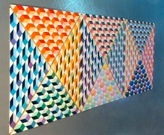
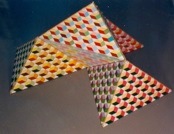
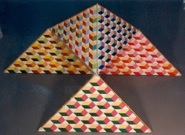
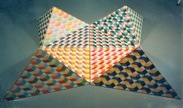
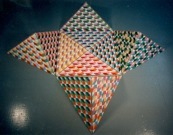
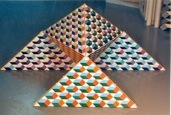
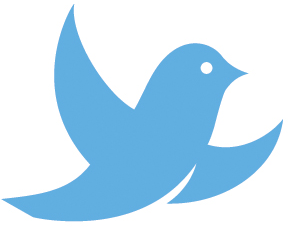


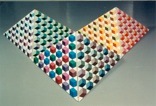
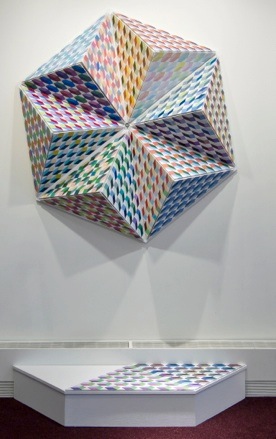
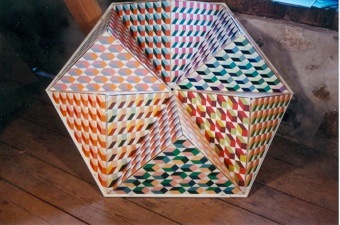
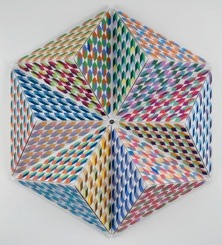
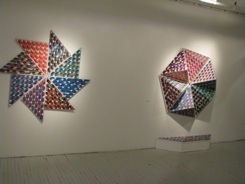
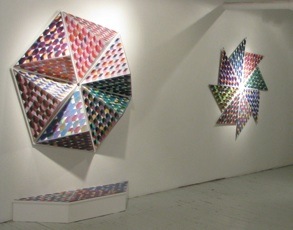
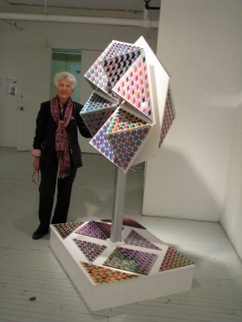
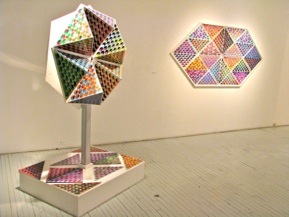
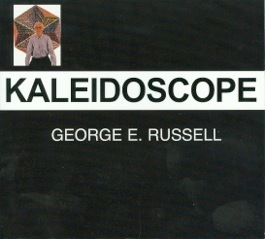
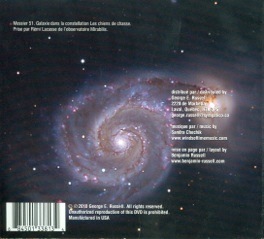
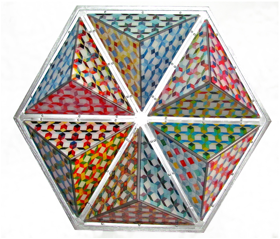
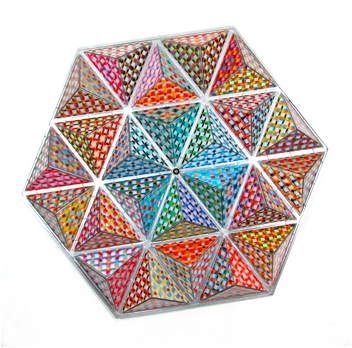
 Thank you, your message has been sent.
Thank you, your message has been sent.